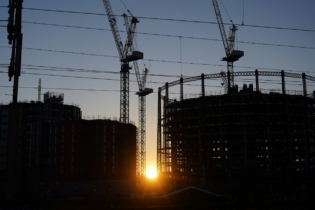Most of the increasing number of alternative building technologies on offer now to help reduce the increasing backlog of housing in South Africa are essentially concrete systems.
This is according to Adéle de Lange, human settlements technical marketing advisor at the Cement & Concrete Institute (C&CI). “It is common knowledge that concrete masonry is the building material of choice in the subsidised housing market.Yet, the exciting range of innovative variations that has been developed around the conventional block design aimed at improving, among many others, the thermal performance, speed and quality of construction and water resistance of the masonry units, is less known. The potential for these innovations to revolutionise the concrete masonry industry in South Africa has not yet been fully explored,” she explains. “When it comes to alternative building technologies (ABTs), there is literally no limit to the creative opportunities that concrete presents. These concrete solutions aim to provide superior quality and increased speed of construction through factory-controlled precision or deskilled labour-intensive processes. Precast, cast in-situ or tilt-up concrete panels dominate the ABT market, often incorporating the reuse of industry by-products to reduce the use of limited resources and improve the durability of the concrete system.
The systems are also frequently designed to achieve superior thermal resistance compared to conventional building systems through the effective combination of high insulation products with the inherent thermal mass of concrete. This can ultimately contribute to the most optimal energy and cost saving results over the lifespan of a building.
“However, due to the vast number of ABTs on the market, it can be a challenging task to choose the most appropriate system. Apart from the cost considerations, C&CI advises specifiers and potential homeowners to ensure that the system complies with the necessary SANS regulations, or alternatively, holds a valid Agremènt SA certificate. They should also request a visit to a completed project where the system was used; firstly as a validation of the end product that is promised and, secondly, to serve as a benchmark for the quality that can be expected. Finally, when local unskilled labour is incorporated, they should ensure that proper training and skills transfer takes place and that adequate site supervision and technical support are provided on-site during the entire construction process. “ABT or conventional concrete can provide a building material solution to address the challenges that face the South African housing backlog. But it remains essential to bear in mind that, while increased speed of construction through ABT solutions will certainly contribute towards diminishing the housing backlog, building technology cannot solely provide a solution to this. The availability of suitable land, affordable finance and the provision of infrastructure services constitute the greater issues that contribute first and foremost to the backlog and these issues need to be resolved first before a reduction in the actual construction period through advanced building technology will be able to contribute significantly to increased housing delivery. The significant role of the construction industry in the job creation process can also not be ignored and it is therefore important to evaluate the contribution of ABTs towards the socio-economic development of South Africa,” De Lange adds.






